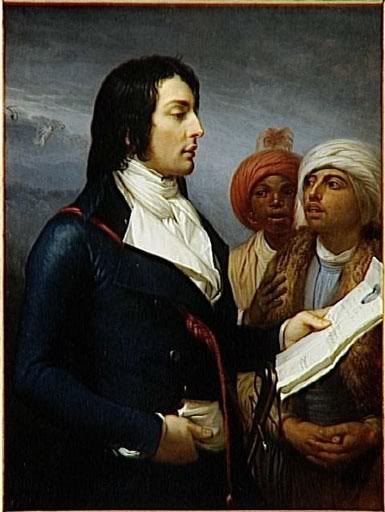Cuadros -Andrea Appiani-

Cuadro de Andrea Appiani
Andrea Appiani (May 31, 1754-November 8, 1817), was an Italian neoclassical painter, the best fresco painter of his time. He was born at Milan.
Andrea Appiani (May 31, 1754-November 8, 1817), was an Italian neoclassical painter, the best fresco painter of his time. He was born at Milan.
He had been intended to follow his father's career in medicine but instead entered the private academy of the painter Carlo Maria Giudici (1723–1804). He received instruction in drawing, copying mainly from sculpture and prints. He studied Raphael through the engravings of Marcantonio Raimondi, as well as the work of Giulio, Anton Raphael Mengs and, again from prints, the compositions in Trajan's Column. He then joined the class of the fresco painter Antonio de' Giorgi (1720–93), which was held at the Ambrosiana picture gallery in Milan, where he was able to study Raphael's art directly from the cartoon of The School of Athens and the work of Leonardo's followers, particularly Bernardino Luini. He also frequented the studio of Martin Knoller, where he deepened his knowledge of painting in oils; and he studied anatomy at the Ospedale Maggiore in Milan with the sculptor Gaetano Monti (1750–1847). His interest in aesthetic issues was stimulated by the classical poet Giuseppe Parini, whom he drew in two fine pencil portraits.
In 1776 he entered the Accademia di Belle Arti di Brera to follow the painting courses of Giuliano Traballesi, from whom he received a mastery of the fresco technique and the encouragement to make copies after Domenichino. However, Correggio was his primary model, and his best pieces, which are in the church of San Maria presso San Celso and the royal palace at Milan, almost rival those of his great master.
He was made pensioned artist to the Kingdom of Italy by Napoleon, but lost his allowance after the events of 1814 and fell into poverty. During his stint as court painter he rendered portraits of Napoleon and the chief personages of his regime. Among the most graceful of his oil paintings are his Venus and Love, and Rinaldo in the garden of Armida. He is known as "the elder", to distinguish him from his great-nephew Andrea Appiani (1817-1865), an historical painter at Rome. Other painters of the same name were Niccolo Appiani (fl. 1510) and Francesco Appiani (1704-1792)
He died at Milan on November 8, 1817.
Labels: Cuadros

0 Comments:
Post a Comment
<< Home